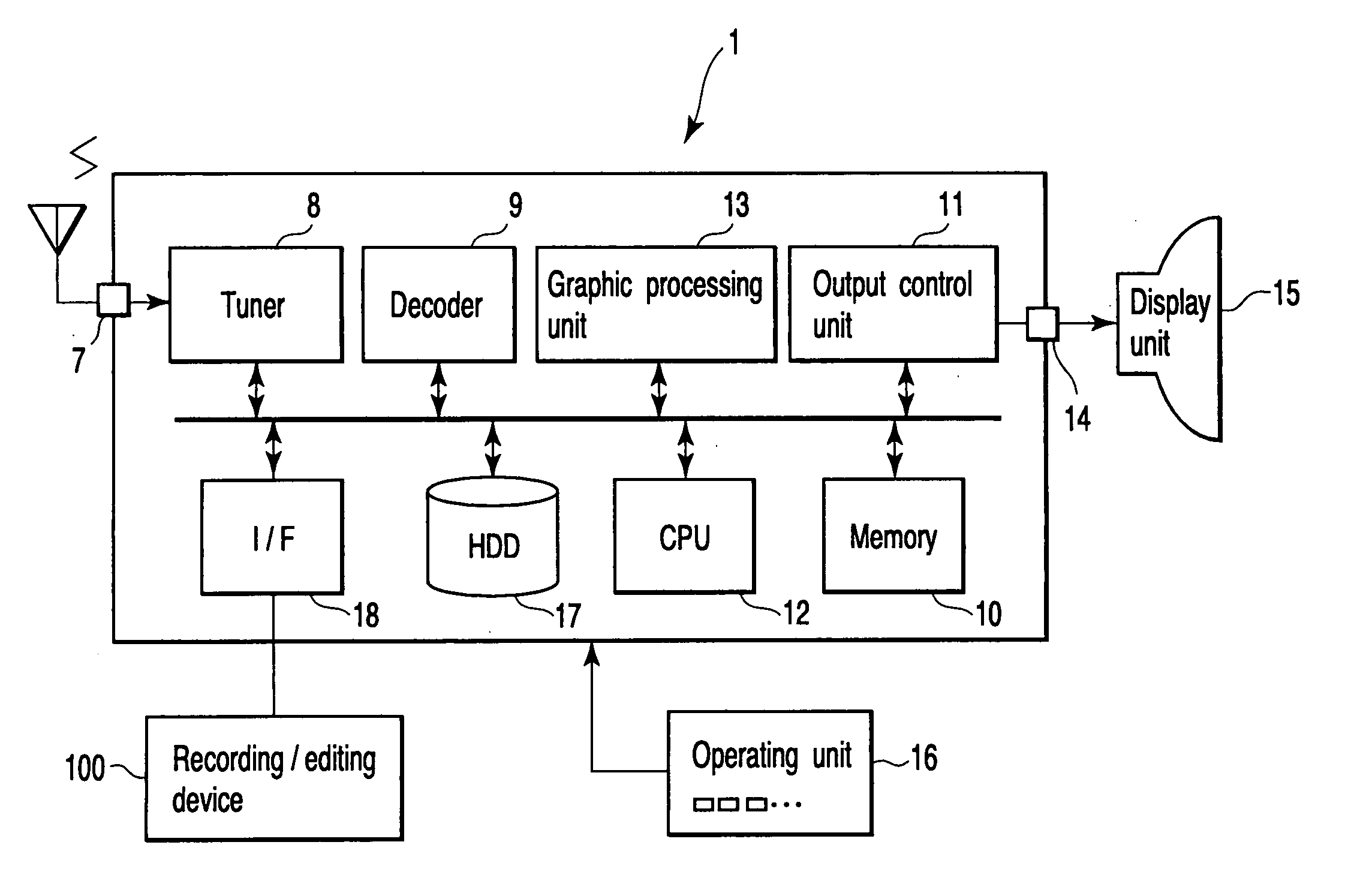Transport stream recording/editing device and recording/editing method
a technology of recording/editing device and transport stream, which is applied in the direction of electronic editing digitized analogue information signal, instruments, television systems, etc., can solve the problems of difficulty in carrying out such editing operations, video packets and audio packets that are multiplexed into a ts are not always synchronized timewise, and the record capacity of a recording device must be larger than the capacity of the ts to be recorded
- Summary
- Abstract
- Description
- Claims
- Application Information
AI Technical Summary
Problems solved by technology
Method used
Image
Examples
first embodiment
[0024] (First Embodiment)
[0025] Embodiments of the present invention will be illustrated in more details by reference to the accompanying drawings.
[0026]FIG. 1 is a block diagram showing an example of a system to which a transport stream editing device 100 according to the present invention is applied. The editing device 100 is connected to a TV receiver 1 via an interface (I / F) 18 such as an IEEE1394 interface.
[0027] The TV receiver 1 comprises an input unit 7, a tuner 8, a decoder 9, a memory 10, an output control unit 11, a CPU 12, a graphic processing unit 13, an output unit 14, a display unit 15, an operating unit 16, an HDD 17, and an interface 18.
[0028] To the input unit 7, broadcasting signals received by an antenna are input. From the broadcasting signals input from the input unit 7, specified program data is extracted by the tuner 8. The tuner 8 is a digital tuner that may receive digital broadcasting such as, for example, BS digital. In the embodiment, a case where dig...
second embodiment
[0065] (Second Embodiment)
[0066] Next, a second embodiment of the present invention will be explained hereinafter. The second embodiment is characterized in that the output control information (flags) recorded in the video time information recording unit 108 and the audio time information recording unit 110 in the first embodiment are added to a private data area of a PES header. FIG. 11 is a view showing a structure of a PES header. When a PES extension flag is 1, and a PES private data flag is 1, the PES private data area of 16 bytes becomes effective. By storing output control information into this private data area, it is possible to make data to be recorded into devices only PES data.
[0067]FIG. 12 is a block diagram showing a configuration of an editing device 100 according to the second embodiment, while FIG. 13 is a flowchart showing recording operation according to the second embodiment. In this flowchart, identical codes are allotted to the steps mutually corresponding to ...
PUM
 Login to View More
Login to View More Abstract
Description
Claims
Application Information
 Login to View More
Login to View More - R&D
- Intellectual Property
- Life Sciences
- Materials
- Tech Scout
- Unparalleled Data Quality
- Higher Quality Content
- 60% Fewer Hallucinations
Browse by: Latest US Patents, China's latest patents, Technical Efficacy Thesaurus, Application Domain, Technology Topic, Popular Technical Reports.
© 2025 PatSnap. All rights reserved.Legal|Privacy policy|Modern Slavery Act Transparency Statement|Sitemap|About US| Contact US: help@patsnap.com



